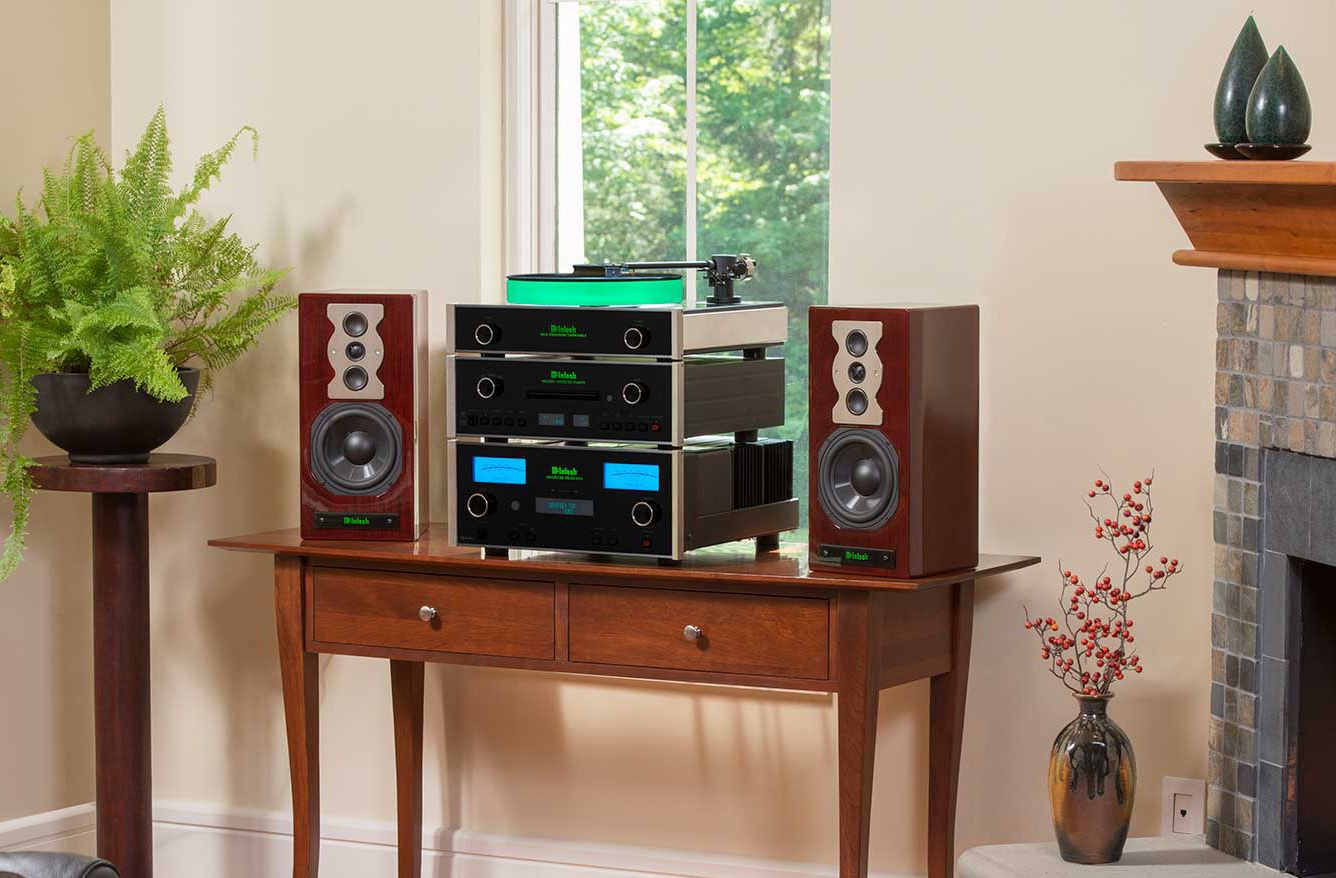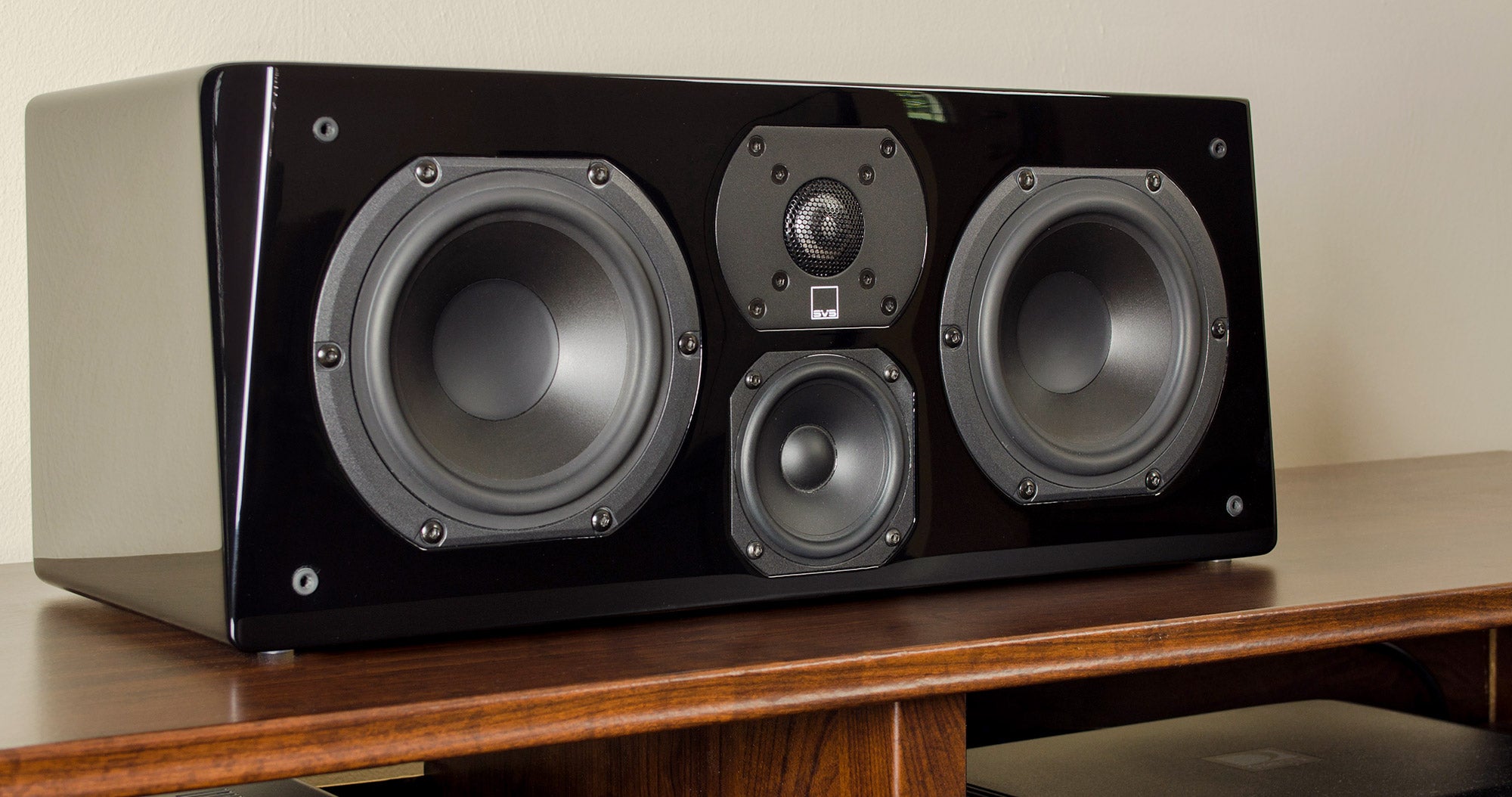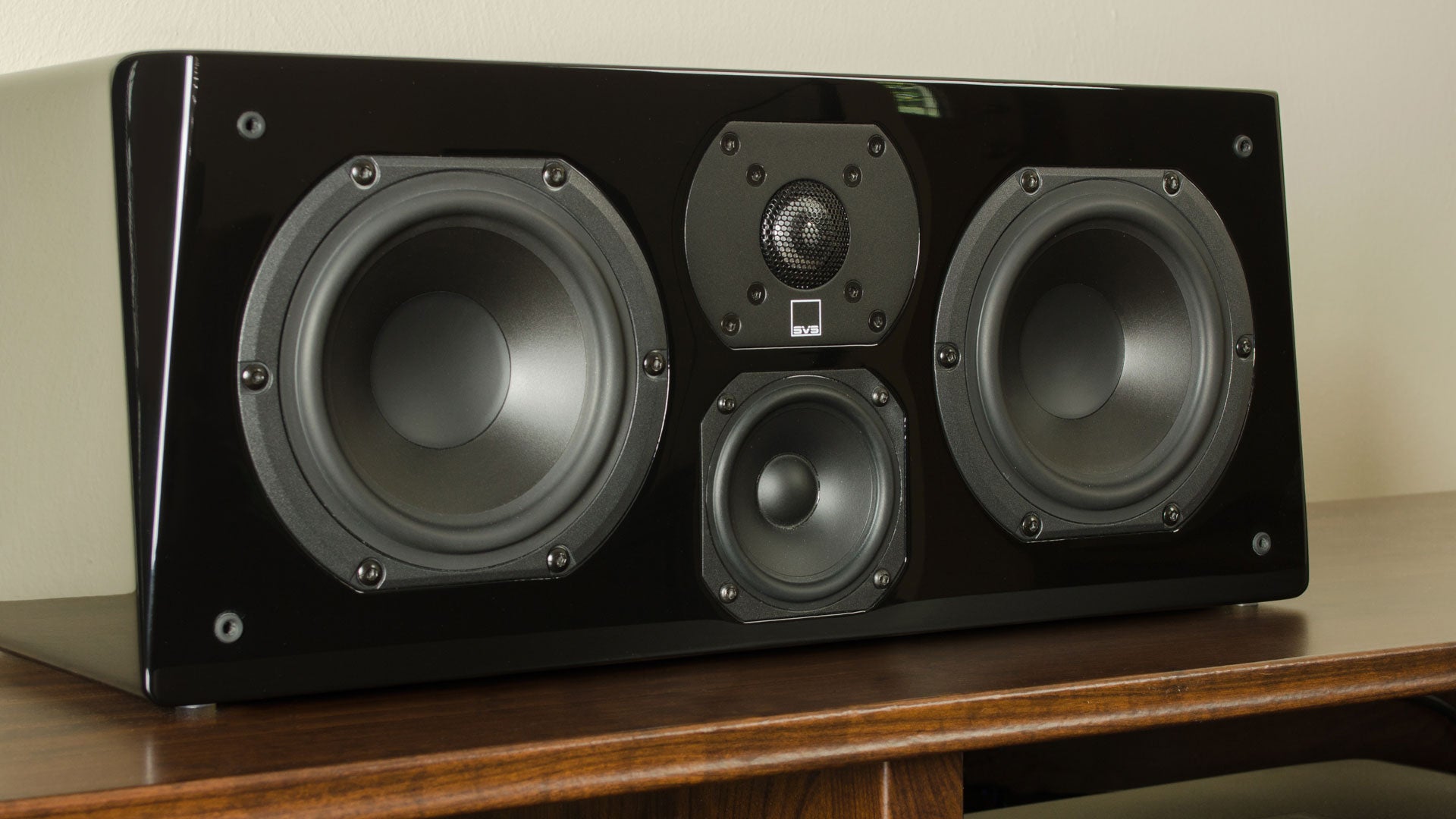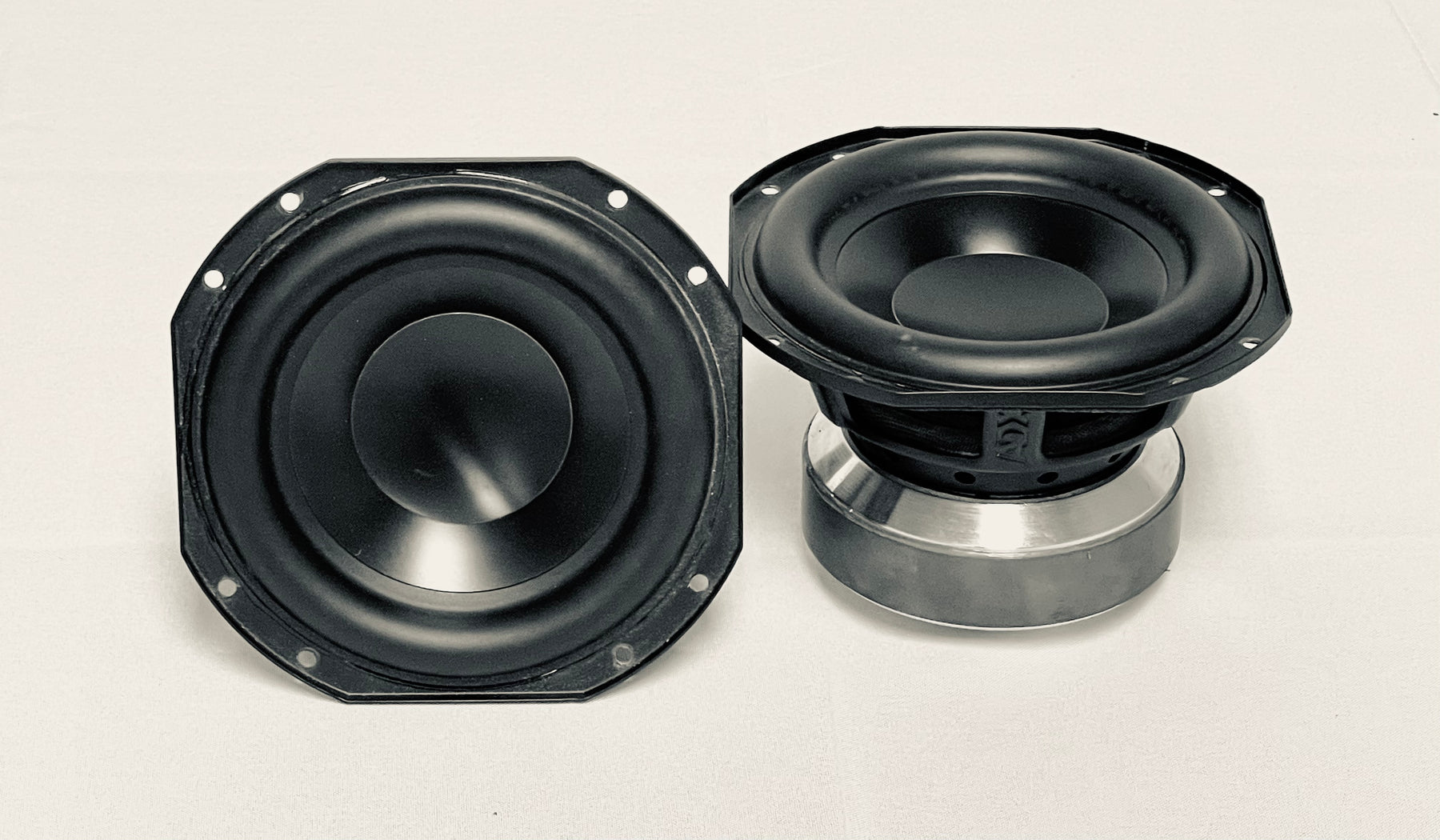Home>Production & Technology>Stereo>What Is Stereo Speakers
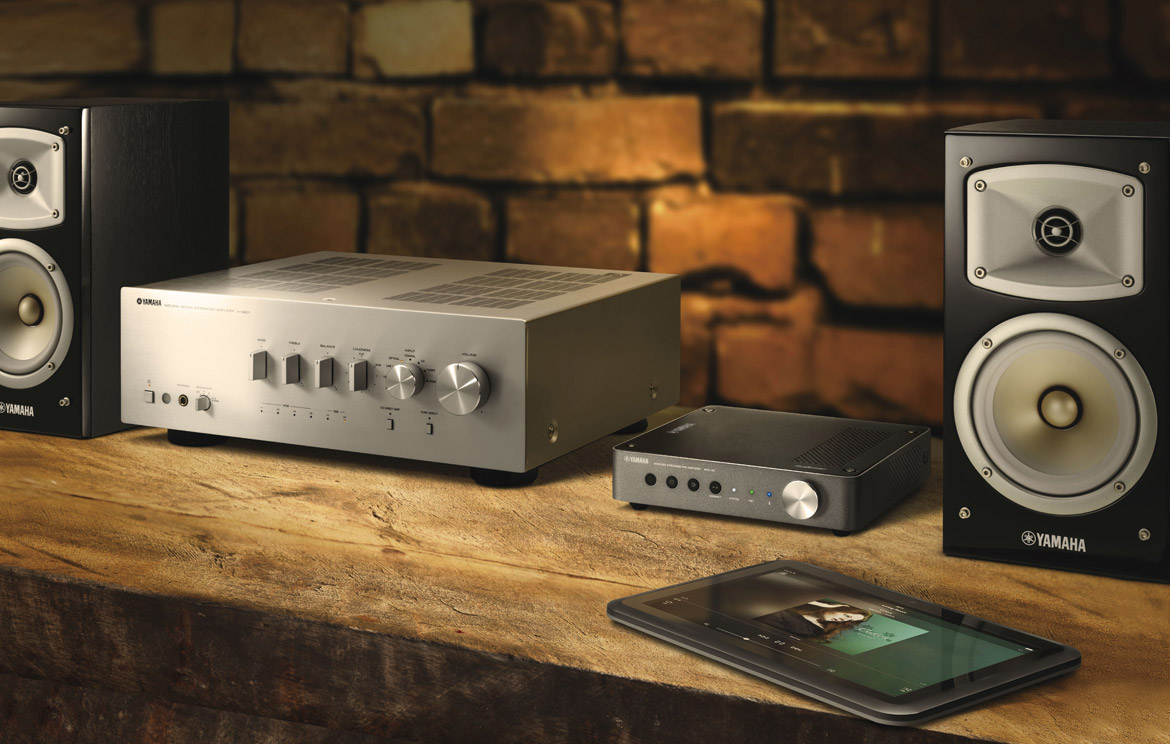

Stereo
What Is Stereo Speakers
Modified: January 22, 2024
Learn about stereo speakers and how they enhance your sound experience. Discover the benefits of stereo audio technology and find the perfect speakers for your listening pleasure.
(Many of the links in this article redirect to a specific reviewed product. Your purchase of these products through affiliate links helps to generate commission for AudioLover.com, at no extra cost. Learn more)
Table of Contents
Introduction
Welcome to the world of stereo speakers! Whether you’re an audiophile or simply someone who enjoys a good sound experience, stereo speakers play a crucial role in delivering high-quality audio. Stereo sound adds depth and dimension to your favorite music, movies, and games, creating a more immersive and realistic listening experience.
In this article, we’ll delve into the world of stereo speakers, exploring their definition, how they work, the benefits they offer, different types available, tips for choosing the right speakers, setting them up, common issues you might encounter, and troubleshooting tips.
Before we dive in, let’s start with a clear definition of what stereo speakers are. Stereo speakers, also known as stereo loudspeakers, are a pair of speakers designed to produce audio in two separate channels: left and right. They are called “stereo” because they create a stereo soundstage, where different elements of the audio are assigned to specific speakers, replicating the way we hear sounds in the real world.
Stereo speakers work by receiving an audio signal and converting it into sound waves through a physical driver, producing a wide range of frequencies from high to low. By separating audio signals into two channels and assigning them to different speakers, stereo speakers are capable of delivering a more accurate sound reproduction, capturing the nuances and spatial effects of the original recording.
So, why should you consider investing in stereo speakers? The answer lies in the enhanced audio experience they provide. With stereo speakers, you can enjoy a more detailed and balanced sound representation, with a wider soundstage and better imaging. This means you can hear instruments and vocals coming from different directions, creating a more immersive and lifelike listening experience that brings your favorite media to life.
Now that we have established the basics of stereo speakers, it’s time to explore the different types available in the market and how to choose the right ones for your needs. Read on to discover more about the world of stereo speakers and take your sound experience to the next level.
Definition of Stereo Speakers
Stereo speakers, also referred to as stereo loudspeakers, are a pair of audio speakers designed to reproduce sound in two separate channels: left and right. They are an integral component of stereo audio systems, delivering a more immersive and realistic listening experience.
The term “stereo” refers to the use of two audio channels and the spatial distribution of sound. Stereo speakers create a stereo soundstage, where each speaker is responsible for playing a specific channel of audio. The left speaker typically reproduces the left audio channel, while the right speaker reproduces the right audio channel. By separating and allocating different sounds to each speaker, stereo speakers can accurately replicate the way we perceive sound in real-life scenarios.
One of the defining features of stereo speakers is their ability to create a wider soundstage. This means that the audio can be perceived as coming from various directions and distances, providing a more three-dimensional and immersive experience. With stereo speakers, you can distinguish between instruments and vocals placed on the left or right side of the soundstage, allowing for a more detailed and enjoyable listening experience.
Stereo speakers come in various shapes, sizes, and designs, allowing you to choose the ones that best suit your preferences and audio setup. They typically consist of a speaker driver, which converts electrical signals into sound waves, and an enclosure or cabinet that houses the driver and controls the sound dispersion. These speakers can be passive or active. Passive stereo speakers require an external amplifier to power them, while active speakers have built-in amplification.
It is important to note that stereo speakers are different from mono speakers. While stereo speakers utilize two separate channels, mono speakers reproduce sound through a single channel, which means they cannot provide the same level of spatial separation and imaging as stereo speakers.
Overall, stereo speakers are designed to complement and enhance audio playback, creating a more immersive and engaging listening experience. In the next section, we will explore how stereo speakers work and the technology behind their operation.
How Stereo Speakers Work
Stereo speakers may seem like simple devices, but they utilize complex technology to reproduce sound accurately and create an immersive listening experience. Understanding how stereo speakers work can help you appreciate the science behind their operation and make informed decisions when choosing and setting up your own system.
At their core, stereo speakers consist of three main components: the speaker driver, the enclosure, and the crossover. The speaker driver is responsible for converting electrical signals into sound waves, while the enclosure and crossover play crucial roles in shaping the sound and controlling its distribution.
The speaker driver is often the most visible component of a stereo speaker. It can be a cone-shaped woofer for handling low frequencies, a dome-shaped tweeter for high frequencies, or a mid-range driver for mid-range frequencies. Each driver is designed to excel in reproducing specific frequency ranges, ensuring a well-rounded and accurate audio reproduction.
The enclosure, or cabinet, plays an important role in the sound reproduction process. It not only acts as a protective housing for the speaker driver but also helps control the dispersion of sound waves. The size, shape, and material of the enclosure can influence the overall sound quality, including factors such as bass response, clarity, and imaging.
The crossover is a vital component that ensures the proper distribution of frequencies to each driver. It splits the incoming audio signal into different frequency bands and sends them to the corresponding drivers. For example, low frequencies are directed to the woofer, high frequencies to the tweeter, and mid-range frequencies to the mid-range driver. This division allows each driver to focus on its designated frequency range, resulting in clear and accurate sound reproduction.
When an audio source, such as a music player or receiver, sends an electrical audio signal to the stereo speakers, the signal is first amplified if necessary before being sent to the speakers. The amplified signal is then split into two separate channels: left and right. Each channel is sent to its respective speaker, creating a stereo sound field.
Within the speakers, the electrical signals are converted into mechanical vibrations by the drivers. The drivers move back and forth rapidly, creating pressure variations that generate sound waves in the surrounding air. These sound waves travel from the speakers towards your ears, where they are detected by the ear’s anatomy and processed by the brain to perceive sound.
The combination of the separated left and right audio channels, along with the three-dimensional positioning of the drivers within the enclosure, allows stereo speakers to create a soundstage that mimics a live performance or recording studio environment. This spatial separation and imaging give depth, width, and realism to the audio, enhancing the overall listening experience.
To optimize the sound quality and performance of stereo speakers, it is important to consider factors such as speaker placement, room acoustics, and proper calibration. We will explore these aspects further in the upcoming sections. Now that we have a good understanding of how stereo speakers work, let’s move on to discussing the benefits they provide.
Benefits of Stereo Speakers
Stereo speakers offer numerous benefits that can significantly enhance your audio experience. Whether you’re a music lover, a movie enthusiast, or a gamer, incorporating stereo speakers into your setup can elevate your enjoyment to a whole new level. Let’s explore some key benefits of using stereo speakers:
- Immersive Sound Experience: One of the primary advantages of stereo speakers is their ability to create an immersive sound experience. With separate left and right channels, stereo speakers can reproduce sound with depth, width, and spatial separation. This provides a more realistic and engaging audio representation, allowing you to feel like you’re in the middle of the action or surrounded by your favorite music.
- Enhanced Soundstage and Imaging: Stereo speakers excel in creating a wide soundstage, where instruments, vocals, and sound effects are spread across the stereo field. This enhances the separation and localization of sound sources, enabling you to pinpoint the exact position of each element within the audio. The result is greater clarity, imaging, and a more enjoyable listening experience.
- Accurate Sound Reproduction: The design and technology behind stereo speakers aim to reproduce audio with high fidelity and accuracy. With dedicated drivers for different frequency ranges, stereo speakers can handle a wide spectrum of sounds and reproduce them faithfully, capturing the nuances and details of the original recording. This means you can enjoy songs, movies, and games as they were intended to be heard.
- Better Separation of Audio Elements: By splitting audio into two separate channels, stereo speakers can separate different elements of the sound, such as individual instruments, vocals, and effects. This allows you to perceive and appreciate each element independently, enhancing the overall listening experience and bringing out the subtle nuances within the audio.
- Wide Compatibility: Stereo speakers are compatible with a wide range of audio devices, from music players and televisions to computers and game consoles. This versatility makes it easy to integrate stereo speakers into your existing setup and enjoy high-quality audio across various platforms.
- Aesthetic Appeal: Besides their audio prowess, stereo speakers can also be visually appealing. They come in a variety of designs, sizes, and finishes, allowing you to choose speakers that not only sound great but also complement your decor and personal style.
Ultimately, stereo speakers offer an enhanced audio experience that goes beyond traditional mono or single speaker setups. They provide a level of depth, clarity, and realism that can make your favorite music, movies, and games truly come alive. In the next section, we’ll explore the different types of stereo speakers available, giving you more options to consider when selecting the right speakers for your needs.
Different Types of Stereo Speakers
When it comes to stereo speakers, there is a wide range of options available to suit different preferences, budgets, and audio setups. Understanding the different types of stereo speakers can help you make an informed decision when choosing the right ones for your needs. Let’s explore some of the most common types:
- Floor-standing Speakers: Floor-standing speakers, also known as tower speakers, are large, freestanding speakers that are designed to be placed on the floor. These speakers often incorporate multiple drivers, including woofers, tweeters, and mid-range drivers, to cover a wide range of frequencies. Floor-standing speakers are capable of producing deep bass, clear vocals, and detailed highs, making them ideal for larger rooms and providing a powerful and immersive listening experience.
- Bookshelf Speakers: Bookshelf speakers are compact, versatile speakers that are designed to be placed on shelves, stands, or mounted to walls. Despite their small size, bookshelf speakers can produce impressive sound quality, making them a popular choice for home audio setups. They are often used in smaller rooms or as rear speakers in surround sound systems. Bookshelf speakers can be paired with a subwoofer to enhance the bass response if desired.
- Studio Monitors: Studio monitors, also known as reference monitors, are designed for audio professionals and enthusiasts who require accurate and neutral sound reproduction. These speakers prioritize a flat frequency response, presenting audio recordings and mixes without any coloration or emphasis on certain frequencies. Studio monitors are typically active speakers, meaning they have built-in amplification, and they are commonly used in recording studios, music production, and critical listening environments.
- Soundbars and Soundbases: Soundbars and soundbases are compact, all-in-one speaker solutions that are designed to improve the audio quality of televisions. Soundbars are long, narrow speakers that can be placed in front of or mounted below a TV, while soundbases are flat, platform-like speakers that the TV sits on. These types of speakers often incorporate multiple drivers and can simulate a wider soundstage, offering an upgrade from built-in TV speakers and providing enhanced clarity and immersive sound for movies and TV shows.
- In-wall and In-ceiling Speakers: In-wall and in-ceiling speakers are designed to be installed directly into walls or ceilings, offering a discreet audio solution that blends seamlessly into the room. These speakers are often used in home theater setups, multi-room audio systems, or environments where visual aesthetics are a priority. In-wall and in-ceiling speakers come in various sizes and configurations, allowing you to customize your audio setup to suit your preferences and room layout.
It’s important to note that the type of stereo speakers you choose will depend on factors such as your room size, desired sound quality, budget, and personal preferences. Each type of speaker has its own advantages and considerations, so it’s essential to evaluate your specific requirements before making a decision.
Next, we’ll provide you with some helpful tips for choosing the right stereo speakers that will meet your audio needs and preferences.
Tips for Choosing the Right Stereo Speakers
Choosing the right stereo speakers can greatly enhance your audio experience and ensure that you enjoy high-quality sound reproduction. With so many options available, it’s important to consider a few key factors when making your decision. Here are some tips to help you choose the right stereo speakers:
- Consider Your Room Size: The size of your room plays a crucial role in determining the appropriate size and power requirements for your stereo speakers. Larger rooms may benefit from floor-standing speakers, as they can provide a more robust sound and fill the space effectively. Smaller rooms may be better suited for bookshelf speakers or soundbars, as they offer more flexibility in terms of placement and size.
- Listen to Demo Audio: Whenever possible, try to listen to demo audio using different speakers before making a purchase. This will give you a better understanding of the sound signature and quality of the speakers you are considering. Pay attention to factors such as clarity, depth, imaging, and overall balance of the sound.
- Consider Speaker Sensitivity and Power Handling: Speaker sensitivity and power handling are important specifications to consider. Higher sensitivity speakers require less power to achieve the same volume levels, making them more suitable for lower-powered amplifiers or receivers. Power handling refers to the maximum power that speakers can handle without distortion. Ensure that your speakers can handle the power output of your amplifier or receiver to avoid damaging them.
- Think About Speaker Placement: Consider the intended placement of your speakers and how they will integrate into your room. Floor-standing speakers may require more space and careful positioning to provide optimal sound. Bookshelf speakers can be placed on stands, shelves, or mounted to walls. In-wall or in-ceiling speakers offer a discreet option for those who want their speakers to blend seamlessly into the room.
- Match Your Speakers with Your Audio Source: Consider the type of audio sources you will be using with your stereo speakers. If you primarily listen to music, ensure the speakers offer good frequency response and accurate audio reproduction. If you use your speakers for movies and gaming, look for speakers that excel in creating an immersive soundstage and can handle dynamic audio effects.
- Read Reviews and Expert Opinions: Before making a final decision, take the time to read reviews and seek expert opinions on the speakers you are considering. Reviews can provide valuable insights into the pros and cons of different speakers and help you make an informed choice based on real-world experiences.
- Set a Realistic Budget: Determine your budget before embarking on your search for stereo speakers. Speakers come in a wide price range, and setting a budget will help you narrow down your options and focus on speakers that offer the best value for your investment.
By considering these tips and taking the time to research and understand your specific needs, you can select stereo speakers that will deliver the audio quality and performance you desire. In the next section, we will discuss the process of setting up stereo speakers for optimal sound reproduction.
Setting up Stereo Speakers
Properly setting up your stereo speakers is essential to ensure optimal sound reproduction and maximize your listening experience. Here are some steps to guide you through the setup process:
- Positioning: Start by considering the ideal positioning for your speakers. The speakers should be placed at ear level, slightly angled towards the listening area. For a stereo setup, the speakers should ideally form an equilateral triangle with the listener, with the same distance between each speaker and the listener. Experiment with the placement to find the best positioning for your room and personal preferences.
- Symmetry: Aim for symmetry in speaker placement and room layout. Ensure that both speakers are equidistant from the walls or any other objects that could interfere with sound dispersion. This helps create a balanced soundstage and improves imaging and sonic coherence.
- Speaker Orientation: Pay attention to the orientation of the speakers. Most speakers have designated left and right channels, so make sure to connect them correctly to your audio source. Additionally, some speakers may have adjustable tweeters that can be angled towards the listener for better high-frequency dispersion.
- Room Acoustics: Take into account the acoustic properties of your room. Rooms with hard surfaces and minimal sound absorption can result in sound reflections and reverberations. Consider adding soft furnishings, curtains, rugs, or acoustic panels to help reduce reflections and improve sound clarity.
- Speaker Wiring: Use high-quality speaker wires to connect your speakers to your audio source or amplifier. Ensure that the polarity (+/-) is consistently maintained throughout the setup to avoid phase cancellation and maintain the correct audio reproduction.
- Subwoofer Placement (if applicable): If you have a separate subwoofer for low-frequency reproduction, experiment with different positions in the room to find the best placement for optimal bass response. Corner placement or near-wall placement can often enhance bass performance, but be mindful of potential room resonances that can result in boomy or muddy bass.
- Calibration and Fine-tuning: After physically setting up your speakers, spend some time calibrating and fine-tuning the audio settings on your amplifier or receiver. Adjust the volume, tone controls, and any equalization settings to achieve the desired sound balance and match the acoustics of your room. Refer to the manufacturer’s instructions or consult audio professionals for guidance if needed.
By following these steps and experimenting with positioning and room acoustics, you can optimize the performance of your stereo speakers and enjoy a well-balanced and immersive audio experience.
In the next section, we will address some common issues that you may encounter with stereo speakers and provide troubleshooting tips to help you resolve them.
Common Issues with Stereo Speakers
While stereo speakers are designed to provide outstanding audio performance, they may sometimes encounter common issues that can affect sound quality and overall enjoyment. Here are some common issues you may encounter with stereo speakers:
- Distorted Sound: Distorted sound can occur due to several factors, such as insufficient power, amplifier clipping, damaged speaker drivers, or improper speaker positioning. Check your speaker connections, ensure the amplifier is not being overdriven, and verify that the speakers are placed correctly. If the issue persists, it may be necessary to have the speakers inspected or repaired by a professional.
- Uneven Frequency Response: Uneven frequency response means that certain frequencies are emphasized or attenuated more than others, resulting in an unbalanced sound. This can be due to speaker positioning, room acoustics, or speaker placement near walls or corners. Adjusting the speakers’ position, adding room treatments, or using equalization tools can help to mitigate this issue.
- Lack of Bass: Insufficient bass output can be caused by various factors, including room acoustics, speaker positioning, or limitations of the speakers themselves. Experimenting with subwoofer placement, adjusting speaker positioning, or using bass management tools on your audio source or amplifier can help address this issue. Additionally, adding a dedicated subwoofer to your setup can provide deeper and more impactful bass reproduction.
- Poor Imaging or Soundstage: If you experience a lack of precise imaging or a limited soundstage, it could be due to improper speaker placement, room acoustics, or a mismatch between the speakers and the listening area. Refer to the previous section on setting up stereo speakers for tips on positioning, symmetry, and room acoustics. Additionally, consider upgrading to speakers that are better suited for your listening environment.
- Interference or Noise: Interference or noise in the audio signal can be caused by factors such as poorly shielded cables, ground loops, or electrical interference from nearby devices. Ensure that your cables are properly shielded and not running near power cables. Using high-quality cables, isolating ground connections, or using power conditioners or noise filters can help minimize interference and noise issues.
- Channel Imbalance: Channel imbalance refers to a noticeable difference in volume or sound quality between the left and right channels. This can be caused by incorrect speaker wiring, amplifier settings, or damaged components. Double-check the wiring connections, verify the balance settings on your amplifier or receiver, and ensure that the speakers are matched in terms of performance and specifications.
It’s important to troubleshoot and address these common issues promptly to ensure that you’re getting the best possible sound quality from your stereo speakers. If you are unable to resolve the issues on your own, it may be beneficial to consult an audio professional for further assistance.
Now that we’ve covered some common issues, let’s move on to the next section where we will provide troubleshooting tips to help you resolve these issues and optimize your stereo speaker performance.
Troubleshooting Stereo Speaker Problems
When encountering problems with your stereo speakers, it’s important to troubleshoot and identify the root cause in order to resolve the issue and restore optimal sound quality. Here are some troubleshooting tips to help you address common problems with stereo speakers:
- No Sound: If your speakers are not producing any sound, start by checking the speaker connections. Ensure that the speakers are properly connected to the audio source or amplifier. Check the volume level on the audio source and amplifier, making sure they are not set too low or on mute. Verify that the amplifier or receiver is powered on and functioning correctly.
- Distorted Sound: Distorted sound can be caused by several factors. Check the speaker connections to ensure they are secure and properly wired. Adjust the volume levels to avoid overdriving the speakers or amplifier. If the distortion persists, it may indicate a damaged speaker driver that requires repair or replacement.
- Channel Imbalance: If you notice a volume imbalance between the left and right channels, check the speaker connections to ensure that they are correct and properly wired. Verify the balance settings on your amplifier or receiver, and adjust them if necessary. If the imbalance persists, it may indicate a malfunctioning component that requires professional attention.
- Poor Bass Response: Insufficient bass response can be due to room acoustics, speaker placement, or limitations of the speakers themselves. Experiment with subwoofer placement or consider adding a dedicated subwoofer to enhance the low-frequency reproduction. Adjust speaker positioning or add room treatments to improve bass performance.
- Interference or Noise: Interference and noise can be caused by electrical interference or poorly shielded cables. Ensure that all cables are properly connected and not running parallel to power cables. Use high-quality shielded cables to minimize interference. Consider using power conditioners or noise filters to further reduce electrical interference.
- Unbalanced Frequency Response: If you notice an uneven frequency response, adjust the speaker positioning to minimize room reflections and resonances. Experiment with speaker placement and consider adding room treatments such as acoustic panels or diffusers. Utilize equalization tools available on your amplifier or receiver to fine-tune the frequency response.
If you have tried troubleshooting and are still experiencing issues with your stereo speakers, it may be necessary to consult an audio professional or contact the manufacturer for further assistance. They can provide expert guidance and help identify any underlying problems that require advanced troubleshooting or repairs.
By following these troubleshooting tips and taking appropriate steps, you can resolve many common stereo speaker problems and restore optimal sound performance. In the concluding section, we will summarize the key points discussed and emphasize the benefits of stereo speakers in enhancing your audio experience.
Conclusion
In conclusion, stereo speakers play a vital role in delivering high-quality audio and creating an immersive listening experience. With their ability to generate a wide soundstage, accurate sound reproduction, and enhanced imaging, stereo speakers bring your favorite music, movies, and games to life.
We started by understanding the definition of stereo speakers and how they work, with their driver, enclosure, and crossover components collaborating to produce realistic sound. We explored the benefits of using stereo speakers, including an immersive sound experience, enhanced soundstage and imaging, accurate sound reproduction, and wide compatibility with various audio sources.
We then delved into the different types of stereo speakers available, ranging from floor-standing and bookshelf speakers to studio monitors, soundbars, and in-wall/in-ceiling speakers. Each type offers unique features and advantages, catering to different needs and room sizes.
Next, we provided useful tips for choosing the right stereo speakers, considering factors such as room size, speaker sensitivity, speaker placement, and compatibility with audio sources. These tips can assist you in making an informed decision that aligns with your preferences and requirements.
We also discussed the process of setting up stereo speakers, emphasizing the importance of proper positioning, symmetry, room acoustics, and speaker wiring to optimize sound quality and achieve a well-balanced audio reproduction. We even covered common issues and troubleshooting tips to address problems such as distorted sound, channel imbalance, and insufficient bass response.
Stereo speakers are undoubtedly a valuable addition to any audio setup, providing an enhanced listening experience and allowing you to fully enjoy the intricacies of your favorite music, movies, and games. By following the guidelines and tips outlined in this article, you can make informed choices and resolve common issues, ensuring that your stereo speakers deliver exceptional sound quality and performance.
So, whether you’re a devoted audiophile, a movie enthusiast, or a casual listener, investing in a pair of quality stereo speakers can transform your audio experience into something truly captivating. Explore the possibilities, select speakers that suit your needs, and embrace the world of stereo sound!


